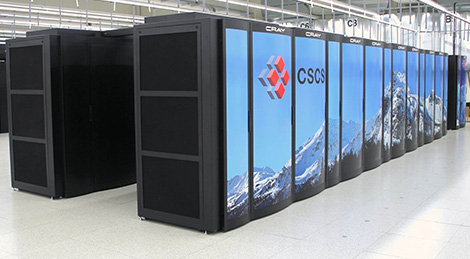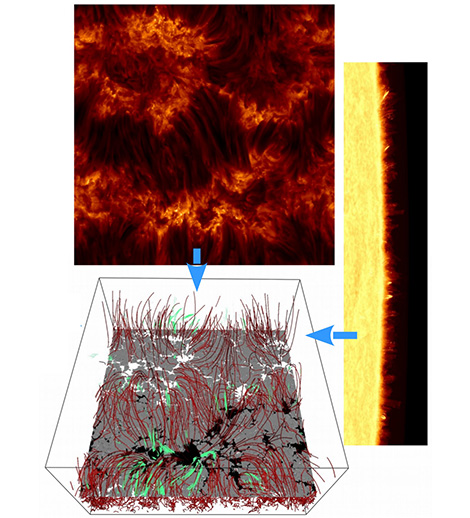News on SOLARNET Trans-national Access Programme
Sitting at the base of a mountain in Italy, a monstrous machine consumes 200 gallons of water every second from a nearby lake; and it is preparing to take on the Sun.
At the start of January 2020, the first tranche of EU Solar Physicists gained access to Piz Daint, a supercomputer at the Swiss National Supercomputing Centre, named after a prominent peak in Grisons in the Swiss Alps. The Piz Daint is the most powerful supercomputer within the EU and ranks number 6 in the world. And with a sense of anticipation, the solar scientists are waiting for this impressive machine to finish crunching the numbers and hopefully reveal new insights into how our Sun works.
The Piz Daint, located near Lugano by the Italian border, is widely used across all branches of science. Switzerland’s weather service make use its immense computational power to model how the climate will evolve. With a peak performance of 25 petaflops, it also aids research that requires the processing of large volumes of data, including understanding the inner workings of the human brain and the behaviour of subatomic particles from experiments at CERN. While it is performing these intensive calculations, water from Lake Lugano is used to help keep the computer cool and significantly reduces the electricity consumption of the facility.
Solar scientists have been able to gain access to the Piz Daint via SOLARNET’s Trans-National Access programme, which has been facilitated by partner USI/IRSOL. As with the previous incarnation of SOLARNET, access to high-resolution solar telescopes is also provided through this activity. This time round, however, it was decided that there was a need for balance between obtaining observational data and accessing facilities required by theoreticians for interpreting the observations. The high-resolution data from the telescopes requires computer simulations of the Sun which are extremely computationally heavy, which means that the Piz Daint is a welcome newcomer to the access programme.
From the first Call for Access in 2019, there were two proposals that met the scientific criteria and also passed feasibility tests for running on Piz Daint. “Our goal is to generate a synthetic Sun” said Sanja Danilovic from Stockholm University, who is leading one of the teams looking to exploit the computational capabilities. Sanja’s team aims to examine the physics of the solar chromosphere, “we start by performing the three-dimensional simulations of the magnetic field to reproduce closely the physical processes taking place in the solar atmosphere” she continued.
The chromosphere is a notoriously difficult region of the Sun’s atmosphere to study, hence the work will use three of the leading codes in solar physics, namely MURaM, Multi3D and StiC. In order to complete the detailed computations, the team will have access to around 3 million CPU hours on the supercomputer. “We need to use the Piz Daint as the main spectral lines for chromospheric diagnostics require very computationally expensive physics to model” explained Sanja, “And, all the relevant physical processes that lead to different phenomena happen on very small scales.” It is hoped that the results will answer some key questions about the heating of the chromosphere.
SOLARNET is aiming to have one call per year for access to Piz Daint, focussing on computational solar physics projects relevant for high-resolution observational research. Selection will be made by the EAST TAC, with a representative from the facility co-opted who will pay special attention to technical feasibility. Projects are run with the constraint that the simulation results will become part of a database of numerical models. They are expected to complement the models already existing in the data base, and to become publicly available after a one-year embargo period.
Written by Richard Morton (Northumbria University, UK)
Email: richard.morton@northumbria.ac.uk


